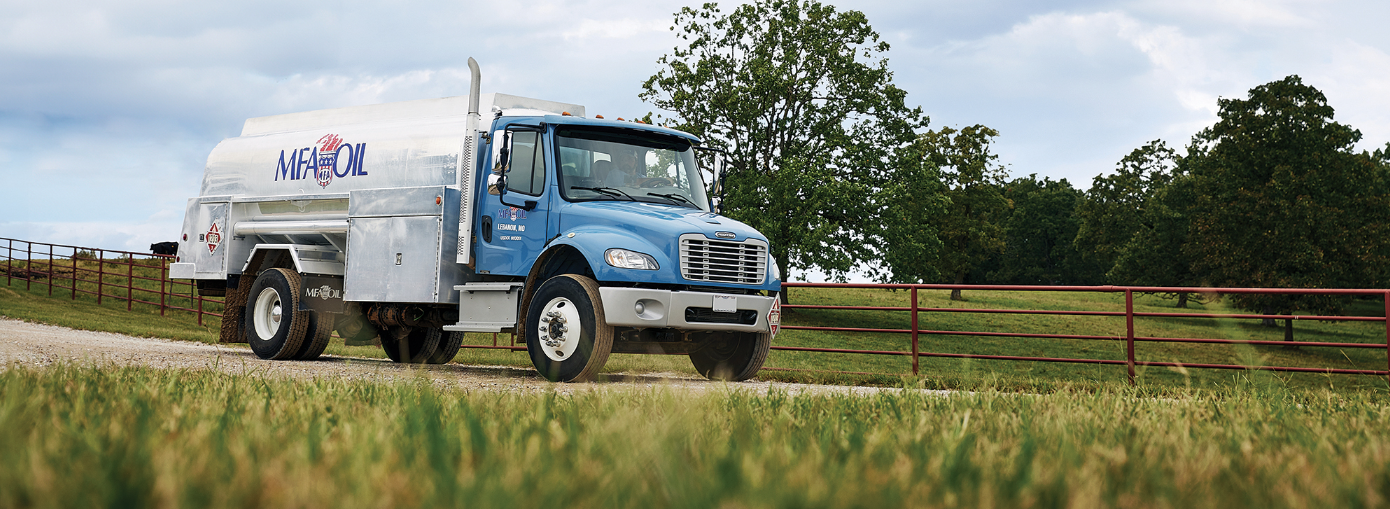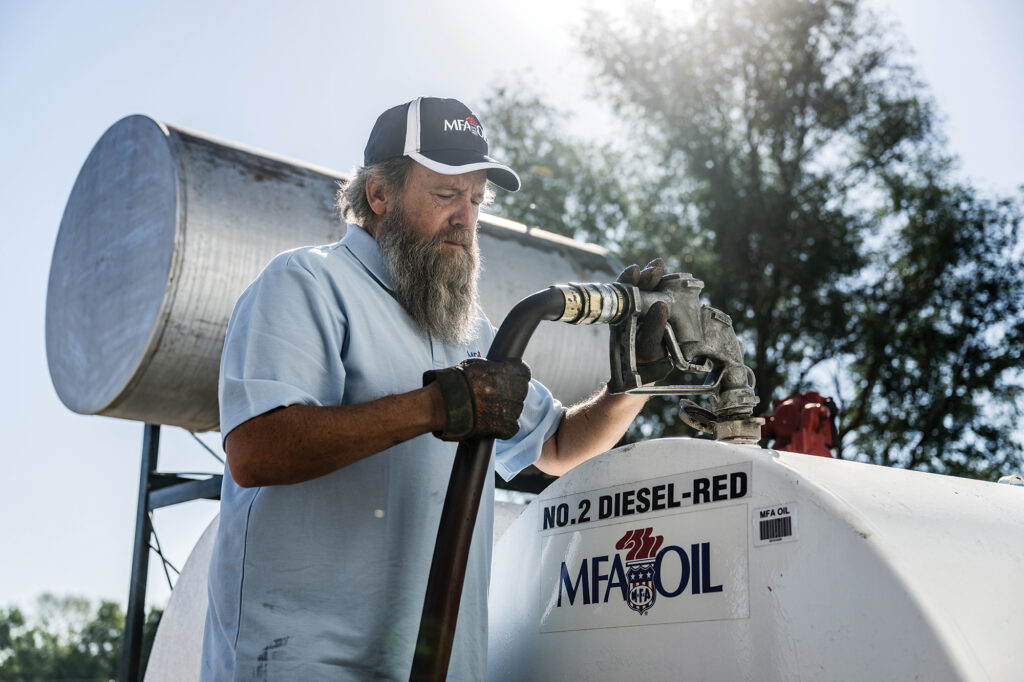
Everything You Need to Know About Diesel Fuel
June 21, 2024
Written By Zach Studer
Do you know what’s in your diesel fuel? Did you know that diesel specifications change throughout the year? Should you be buying additives for your fuel? These are important questions you need to be able to answer to get the most out of the fuel you buy.
Many people commonly assume diesel fuel coming from a fuel terminal meets the same specification year-round. In fact, there are many differences in the fuel, which can dramatically affect the performance of your equipment.
Seasonal Fuel Variations
Each April, the pipeline specification for #2 diesel changes to the summer formulation, which has a max pour point of +10°F and a max cloud point of +20°F. A fuel’s pour point is measured as 5°F above the temperature at which a fuel ceases to flow due to the formation of wax crystals that increase its viscosity. Cloud point measures the temperature at which long-chained paraffins begin to crystallize, causing the fuel to appear cloudy. Since wax and temperature concerns are not an issue in summer, increasing the pour and cloud points allows for longer chain paraffin in the fuel, which provides more energy and increases horsepower.
The summer fuel specification is maintained until August when pipelines transition to winter formulations. The winter diesel specification lowers the pour point from +10°F to 0°F, and the cloud point drops from +20°F to +15°F. Removing the longer paraffin chains in the winter helps ensure the fuel remains fluid and flows smoothly in colder temperatures.
It’s crucial to understand that the shift from summer to winter fuel, and vice versa, is a gradual process. Fuel movement through the pipeline takes time, and terminals may still have seasonal fuel in storage for distribution. Similarly, bulk fuel retailers like MFA Oil need to cycle through their inventory. These transitions can span several weeks, so it’s important not to rely solely on the date for fuel specification assumptions.
Know Your Additives
Additives are vital in fuel and are used at refineries, pipelines and fuel terminals. They can also be introduced through splash-blending in storage tanks or equipment. Every additive has a defined role based on need.
Refineries often add pour point depressants to help the fuel flow at low temperatures, corrosion inhibitors that protect metal parts and conductivity improvers to prevent against static discharge. A drag-reducing agent, which reduces frictional pressure loss, is another additive injected at the pipeline. These products consist of long-chain hydrocarbon polymers designed to shear away when they pass through a pump. Lubricity additives are injected into diesel fuel at terminals to restore or enhance its lubricating properties. Diesel engines rely on lubrication to minimize friction between moving parts, which helps to prevent wear and tear on engine components. Insufficient lubrication can lead to increased friction; premature wear of engine parts; and, ultimately, engine damage.
It’s crucial to understand that the shift from summer to winter fuel, and vice versa, is a gradual process.
These additives are in every drop of fuel picked up from the terminals. Think of them as the bare minimum of additives in diesel fuel. They are present whether we want them or not. However, we can add additional additives to enhance the fuel’s properties further.
Don’t Over Do It
Like many things in life, more is not always better. There is a point of diminishing returns, and over-additizing can produce adverse effects. Plus, some additives are simply not compatible with others.
Temperature and solubility rates are important considerations to determine before taking action. Some additives are only soluble at certain treatment rates. Think of it like making a pitcher of sweet tea. You can add only so much sugar before the tea becomes saturated. Once you hit the saturation limit, the remaining sugar does not dissolve but drops to the bottom. The same is true of some diesel additives.
Typically, cold flow improvers and wax anti-settling agents should only be added when the temperature of the fuel is at least 20°F above the fuel’s cloud point. So, if the cloud point is 14°F, you need to use these additives when the fuel temperature is at least 34°F. Pouring these additives into your storage tank or equipment when it’s already freezing is likely too late. The fuel may be too cold for the additives to blend with the fuel, and the additive may drop to the bottom of the tank. The concentrated additive entering the fuel system can cause filter plugging. However, if you purchase a premium diesel fuel like BOSS Performance Diesel®, the fuel will already contain all the additives needed to perform properly, and any additional product could throw off the delicate balance. Always consult your local MFA Oil bulk plant manager or the MFA Oil laboratory before adding anything to your fuel.
Keep it Clean
Contaminants can wreak havoc inside storage tanks and your equipment’s fuel systems. Even under ideal conditions, contaminants can find their way into the fuel, plugging filters, damaging pumps and destroying injectors. The most common contaminant in diesel fuel is water, and a small amount of water is common.
Typically, water found in diesel fuel is held in suspension and is measured in parts per million (ppm). While the standard specification for diesel fuel oils, ASTM D975, allows for up to 500 ppm of water in diesel fuel, we usually see less than 100 ppm. The bigger problem we see is free water, or water not held in suspension.
Since water is denser than diesel fuel, it drops to the bottom of the fuel system, where it accumulates. The water can lead to oxidation, rust and microbial growth throughout the fuel system if left unchecked.
Water can enter a fuel system in several ways. Leaking gaskets or a fill cap left open on a bulk storage tank can allow rainwater to enter the tank. One of the most common ways water enters a tank is through condensation. On a hot summer day, a fuel tank will begin to warm up. As the tank warms, the fuel and air inside the tank also heat up. At night, the walls of the tank begin to cool, and when the warm air inside the tank hits the cooler tank walls, water droplets form inside the tank. These droplets can add up to significant volumes of water over time.
Dust and debris are also an issue in fuel. Storage tanks naturally aspirate or breathe. As a tank warms during the day, the air inside expands and is pushed out of the tank through the fill cap or through a breather. At night, the air inside cools and contracts, creating a vacuum. The negative pressure inside the tank causes air from the outside to be pulled in to fill the void. As air is pulled into the tank, dust, debris and other sediment carried by the air are also pulled into the tank.
Changing Fuel Filters
Changing fuel filters on your equipment is rarely a pleasant experience. They’re usually difficult to get to, the timing is never convenient, and they’re expensive. Eventually, filters need to be changed. However, you can prevent premature filter plugging on your equipment. Filter the fuel before it gets to your equipment.
Most equipment today comes with 10-micron or smaller fuel filters, and the newer Bobcat skid steers and John Deere tractors utilize 2-micron filters. If you plan to prolong the life of the filters on your equipment, you’ll need to get the fuel filtered down to at least the same micron rating as the filters on your equipment. So, what size micron filters are on the dispensers where you get your fuel? It may surprise you to learn that in the state of Missouri, there is no mandated fuel filter micron rating for diesel dispensers at retail locations. If you have your own bulk fuel pumps, the best practice is to use filters on your dispensers as fine as those on your equipment. The more you filter the product before it gets to your equipment, the better. This goes for transfer tanks as well. If you have a transfer tank in the back of a pickup, the fuel should be filtered when filling the transfer tank.
We also recommend changing your dispensing equipment’s filters at least twice a year. When you’re setting your clocks either forward or backward and checking the batteries in your smoke detectors, don’t forget to change your fuel filters.

Maximize Your Diesel Fuel
BOSS is formulated with an advanced additive package to keep your engine running at peak performance. The additives in BOSS inhibit the formation of carbon particles, prolong fuel filter life, and maintain optimum power and fuel economy. Cetane improvers help fuel ignite more quickly and burn more completely. Oxidation improvers offer superior storage life, extending the time fuel can sit in storage tanks without degrading. These additives can be injected at some terminals, or they can be packaged for retail sales and added to bulk storage tanks or directly to the fuel tank on your equipment.
During the winter months, BOSS utilizes cold-flow improvers, wax anti-settling agents and icing inhibitors. Cold-flow improvers and wax modifiers prevent wax from sticking together by modifying the size and structure of the paraffin so it can pass through a filter. Wax anti-settling agents keep the wax dispersed evenly in the fuel rather than allowing it to settle and accumulate near the bottom of storage or fuel tanks. Multiple-stage icing inhibitors depress the freezing point of free water in the system.
No matter the season, BOSS Performance Diesel will improve your fuel economy, clean your fuel system, increase your horsepower and improve your diesel fuel reliability.

